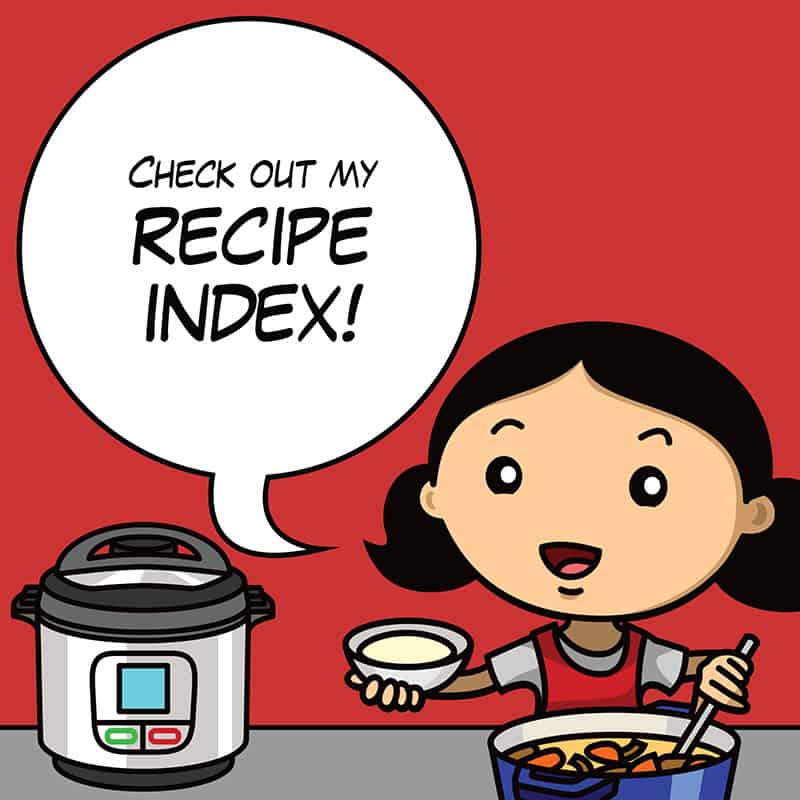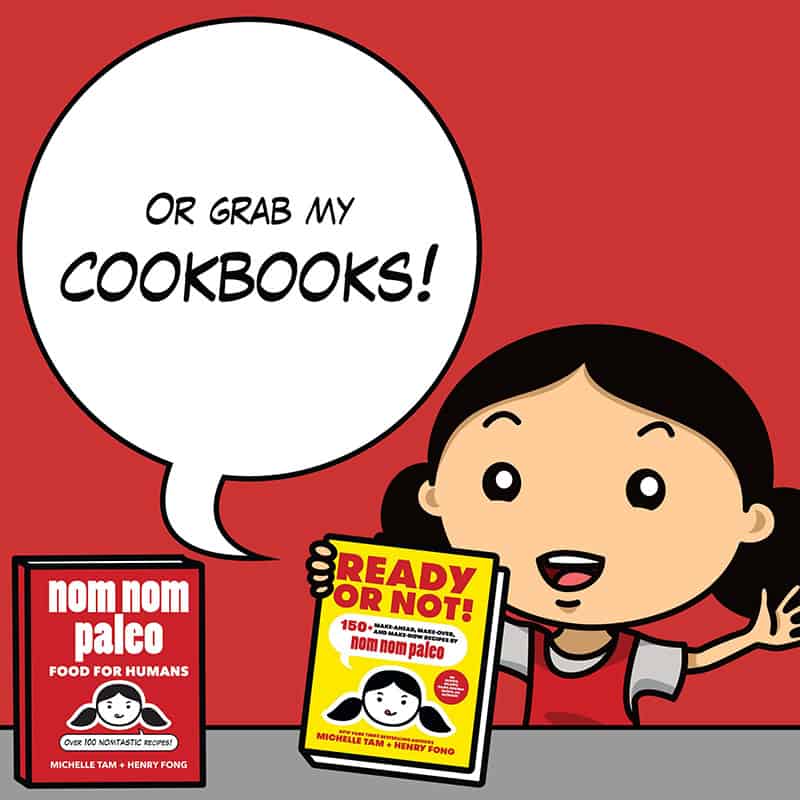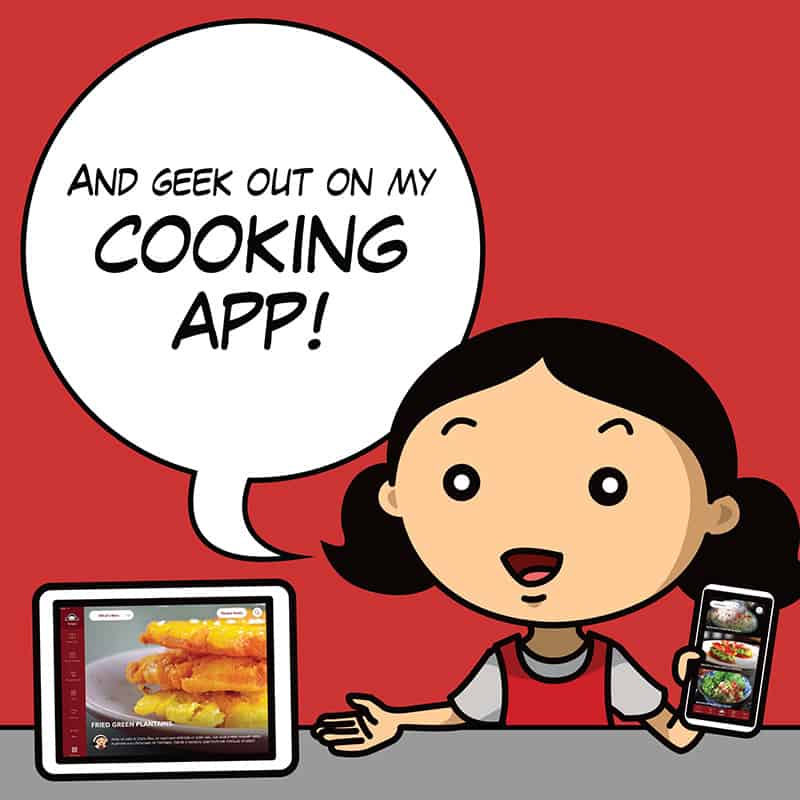Have you wondered what’s paleo? Looking for a Paleo 101 that will answer all your questions about the paleo diet? I’ve got you covered here!
Paleo 101
In a nutshell, the Paleo approach to eating is based on the notion that for optimal health, modern humans should go back to eating real, whole unprocessed foods that are more healthful than harmful to our bodies. Here—in comic form—is my condensed “elevator pitch” explanation of the Paleo diet (from my cookbook, Nom Nom Paleo: Food for Humans):
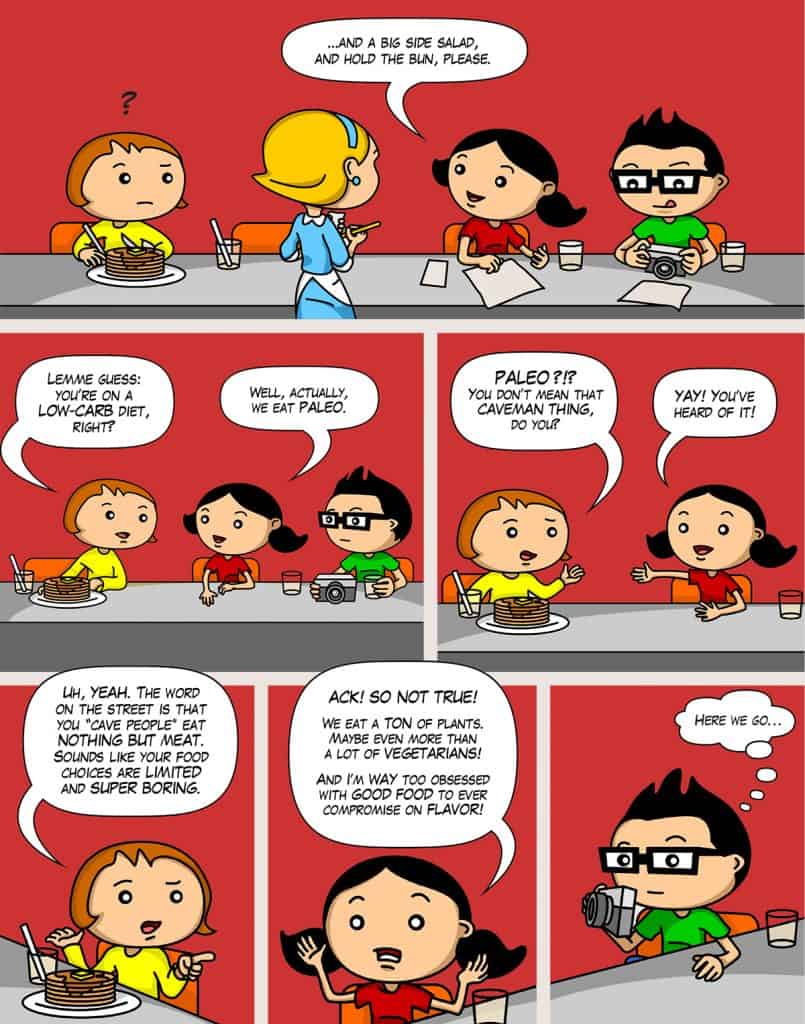
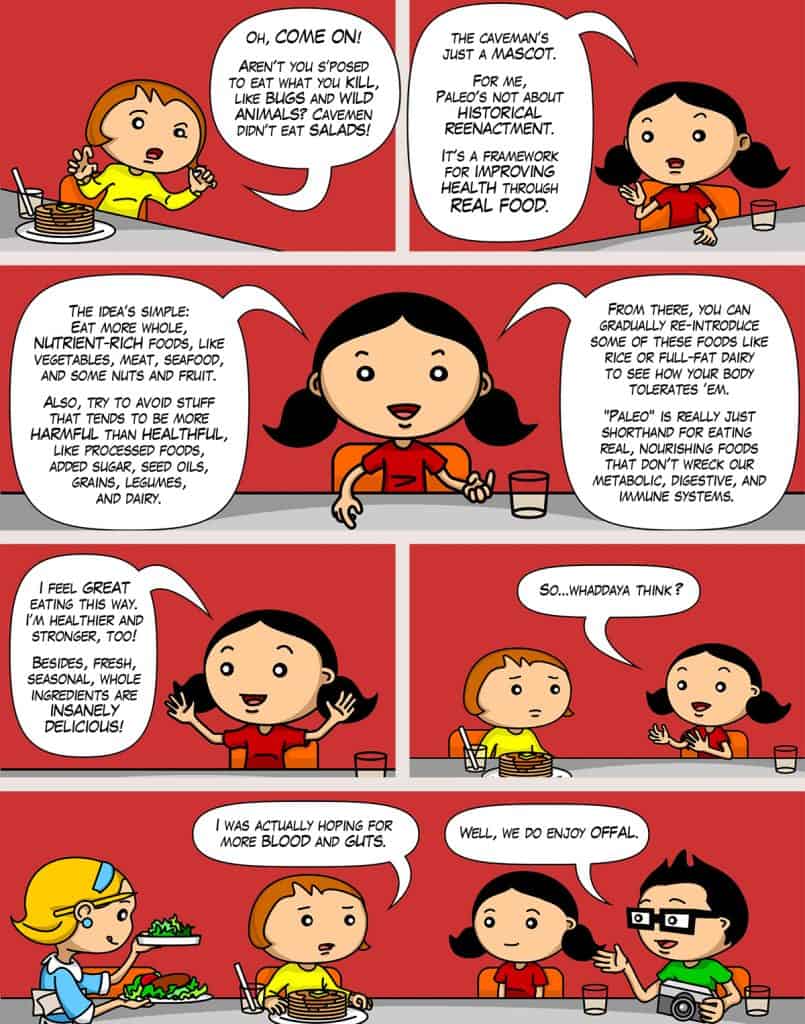
Paleo is an ancestral approach that prioritizes eating real, whole, nutrient-dense foods. At its core, Paleo is about trying to eat real, naturally occurring ingredients that are healthful rather than harmful. Biologically, our bodies respond best to real, whole, nutrient-dense foods like plants, meat, and seafood—all of them packed with the nutrients our bodies evolved to thrive on. It was only after industrialized food production and lab-engineered edibles took over our diets that the ”diseases of civilization“ exploded. Today, wheat, soy, sugar, and highly processed foods continue to drive up rates of autoimmune disorders, cardiovascular disease, type-2 diabetes, and obesity. But by getting back to eating real food, we can stay healthier and happier.
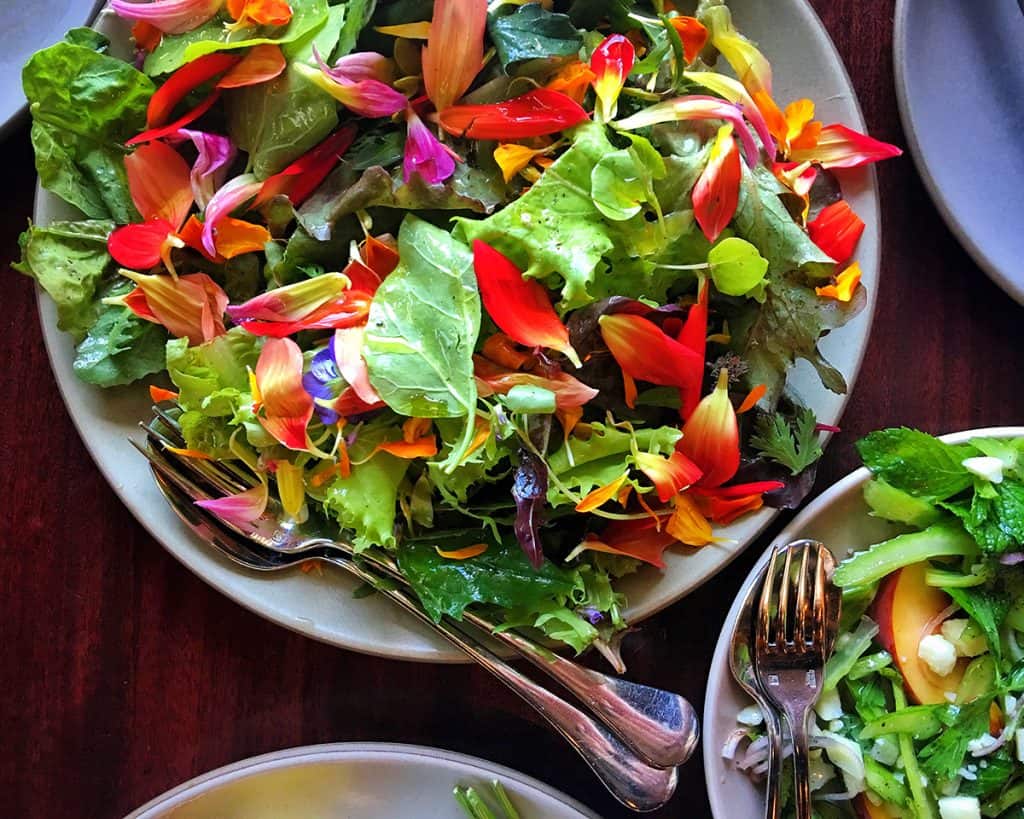
Paleo doesn’t have to be super strict
I know that a lot of people still call this the “caveman diet,” but Paleo isn’t about slavishly and mindlessly replicating the actual diets of Paleolithic humans. Okay, a few Paleo die-hards may approach their diets this way, but that’s not the way I eat at all. In fact, there isn’t just one definitive, monolithic, one-size-fits-all “Paleo diet.” Some Paleo eaters choose to go super-low-carb, while others of us (me included!) are happy to munch on a baked potato or a bowl of white rice every now and then. There are Paleo eaters who can’t imagine life without dairy, and more orthodox folks who refuse to touch even a pat of butter with a ten-foot pole. The Paleo tent is big enough to fit a host of different approaches, but the core tenets of ancestral eating remain the same:
Prioritize whole, unprocessed, nutrient-dense, nourishing foods
Eat vegetables, grass-fed and pastured meat and eggs, wild-caught seafood, healthy fats, fermented foods, fruit, nuts, seeds, and spices.
Avoid foods that are likely to be more harmful than healthful
Especially when regularly and heavily consumed, foods like grains, dairy, soy, sugar, and processed seed and vegetable oils can trigger inflammation, cause digestive problems, or derail our natural metabolic processes.
Physicians, biochemists, nutritionists, and other researchers are starting to come around to the benefits of ancestral nutrition, and people who adopt a Paleo-like approach to eating are reporting significant improvements in their general health, body composition, and energy levels. Most importantly, there’s evidence that folks who eat this way are reducing their risks of numerous diseases and disorders that are associated with the Standard American Diet (S.A.D.).
I know what you’re thinking: how can this be healthy? Many folks seem to think that eating according to a Paleo diet means going super-duper low-carb and consuming gobs and gobs of meat and animal fat. But for me, Paleo looks more like this:

Yes, high-quality proteins and fats are part of the equation, but so are lots of vegetables and even (gasp!) carbohydrates. It’s not like I dumped all the grains (which, let’s face it, aren’t naturally nutrient-rich) and processed junk off my plate and replaced it with bacon. Instead, I substituted with more vegetables and some fruit—and I replaced the low-quality, CAFO-raised, steroid-injected meat I used to eat with grass-fed and pastured proteins and sustainable seafood.
Have I convinced you to give Paleo a shot? Good.
My blog, cookbooks, cooking app, and podcast, are intended to help you translate the “rules of the road” into delicious, easy-to-prepare meals for you and your family. Here, you’ll see the way I eat on an everyday basis, and my recipes, too. In case you’re wondering, I cook entirely gluten- and soy-free, and steer clear of legumes and refined vegetable and seed oils.
For the most part, my eats are “clean.” For me, that means generally following the rules of the Whole30®. The Whole30 is a nutritional reset that gets you back to a clean dietary slate: Eliminate all grains, legumes, dairy, sugar, and chemically processed vegetable and seed oils from your diet for a month. Once a baseline of health is established, slowly reintroduce some of these foods (like dairy, white rice, and dark chocolate—not hyper-processed junk foods!) one at a time to see where you sit on the spectrum of food tolerance. We all share the goal of finding a lifelong template for optimal nutrition and health, but you just might find that your template allows for a wider range of foods than mine.
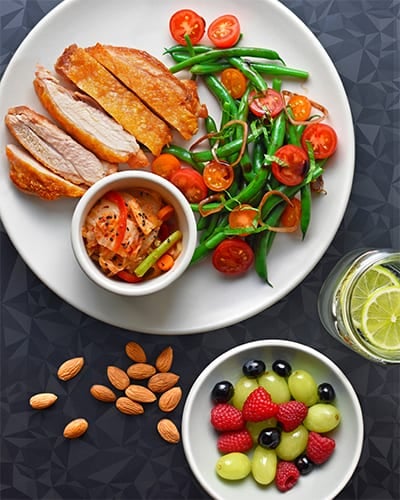
Certainly, if you’re on a weight-loss journey, suffering from an immunological disorder, or committing to a 30-day dietary reset (like the Whole30), a super-strict, orthodox approach to Paleo may be the perfect starting point for you. I’ve done a couple of these Paleo re-sets myself.
However, as I already mentioned, the Paleo template simply gives us a starting point from which to decide how to feed ourselves in the modern world. I make my own choices by weighing the health consequences of the foods I eat—and I also consider the gustatory pleasure of the experiences, too. Over the past few years, my attitude toward food has evolved. When I first adopted a Paleo lifestyle, I strictly followed the rigid dictates of the Paleo diet because this new way of eating made me feel so much better. I didn’t even think to question why it worked. But with time, I’ve learned that it’s more important to stay curious about the science behind the approach, and to be fully conscious of my food choices. I learned that I don’t need to strive for “Paleo perfection” as long as I’m mindful of what I’m choosing to put into my mouth, and why.
Plus, I’m a food fiend. As a modern cave-foodie, I follow these three basic rules:
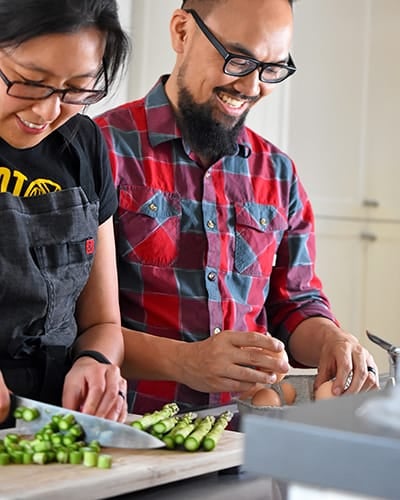
1. Follow the Paleo roadmap as closely as possible.
Yes, there may be an occasional detour, and every now and then, some gastronomic off-roading can be fun and well worth the indulgence. But we need to keep moving in the right direction, which means avoiding dietary potholes like gluten, soy, added sugar, processed junk, and other inflammatory and gut-wrecking foods as much as possible.
2. Simple and quick does the trick.
Cooking becomes an overwhelming chore when we get too wrapped up in complicated, time-consuming recipes. To be practical and sustainable, ancestral nutrition has to be easy. As a working mom, I’m always on the lookout for shortcuts in the kitchen, and often rely on modern conveniences that cavemen never enjoyed, like pressure cookers, slow cookers, and food processors. (I also appreciate indoor plumbing, for what it’s worth.)
3. Last but not least: It better be crazy-delicious.
Too many folks think the Paleo approach to eating is about deprivation, and that all we eat is ground beef with a side of steamed broccoli. “I can’t go Paleo – there’ll be nothing I can eat,” skeptics say. But what they mean is that they can’t conceive of Paleo food being anywhere near as scrumptious as their weekly meals at the local greasy spoon, or as satisfying as the crinkly bag of half-eaten fluorescent cheese poofs on the floor of their car. To get people to maintain a Paleo lifestyle, it’s important to show how the food that fuels them can be healthy and insanely good.
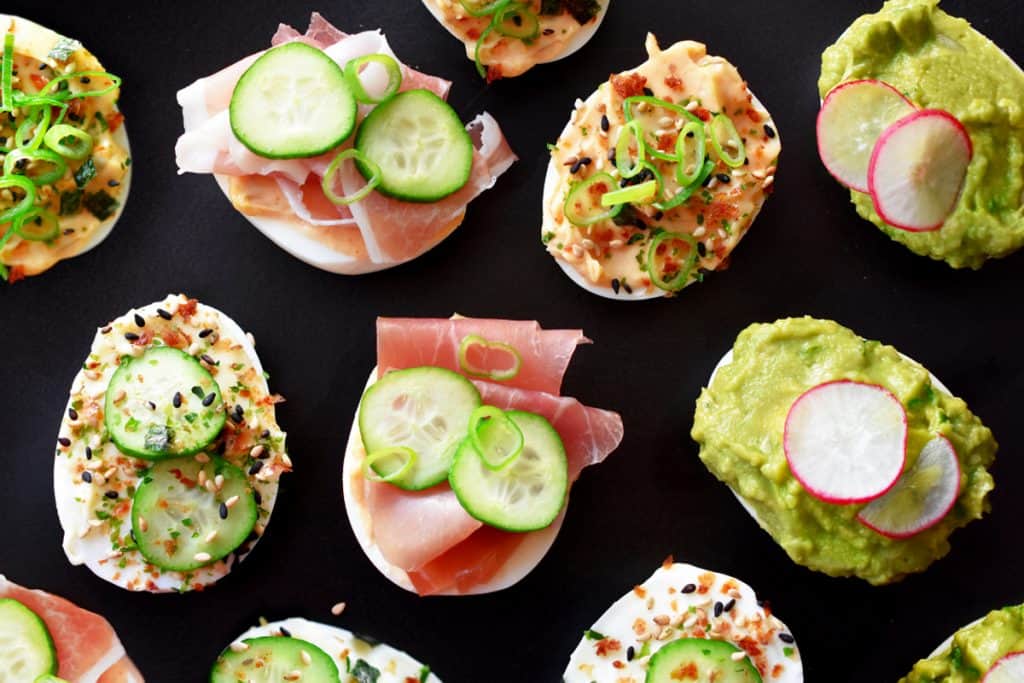
Some final thoughts to keep in mind:
Paleo is not a weight loss cure-all.
If years of unhealthy eating have wrecked your metabolism and you’re carrying around extra body fat, switching to a Paleo diet will certainly help your body composition and overall health. But the point of eating Paleo is not to shed as many pounds as possible so that you can fit into the jeans you wore in high school. This nutritional approach is about optimizing your health and wellness – not transforming you into a waiflike size zero runway model with that special heroin-chic je ne sais quoi.
Stick with it for at least 30 days.
For many people, switching over to Paleo isn’t easy. Due to the sudden drop-off in dietary carbohydrates, folks who are used to mainlining pasta and sugar often report that they feel terrible for the first couple of weeks after going Paleo. (Some call this the “Paleo flu.”) But if you can make it through this initial period of sluggishness (which can last two or three weeks), you’ll come through the other end feeling like a million bucks. Trust me. I’ve been there.
Eat like a champ.
Don’t be afraid to try new recipes or experience new foods—including healthy dietary fats, fermented foods, and naturally umami-rich ingredients. The Paleo diet may feel restrictive at first, but if you have an open mind and adventurous palate, you’ll soon find that this way of eating offers infinite variety, flavors, and nourishment.
For any life change to truly take hold, it has to be enjoyable. I hope the recipes on Nom Nom Paleo will engage your palate and provide you with inspiration to make this way of eating as fun for you and your loved ones as it is for me and mine.
Enjoy!
Looking for recipe ideas? Head on over to my Recipe Index. You’ll also find exclusive recipes on my iPhone and iPad app, and in my cookbooks, Nom Nom Paleo: Food for Humans (Andrews McMeel Publishing 2013), Ready or Not! (Andrews McMeel Publishing 2017) and Nom Nom Paleo: Let’s Go! (Andrews McMeel Publishing 2022).

